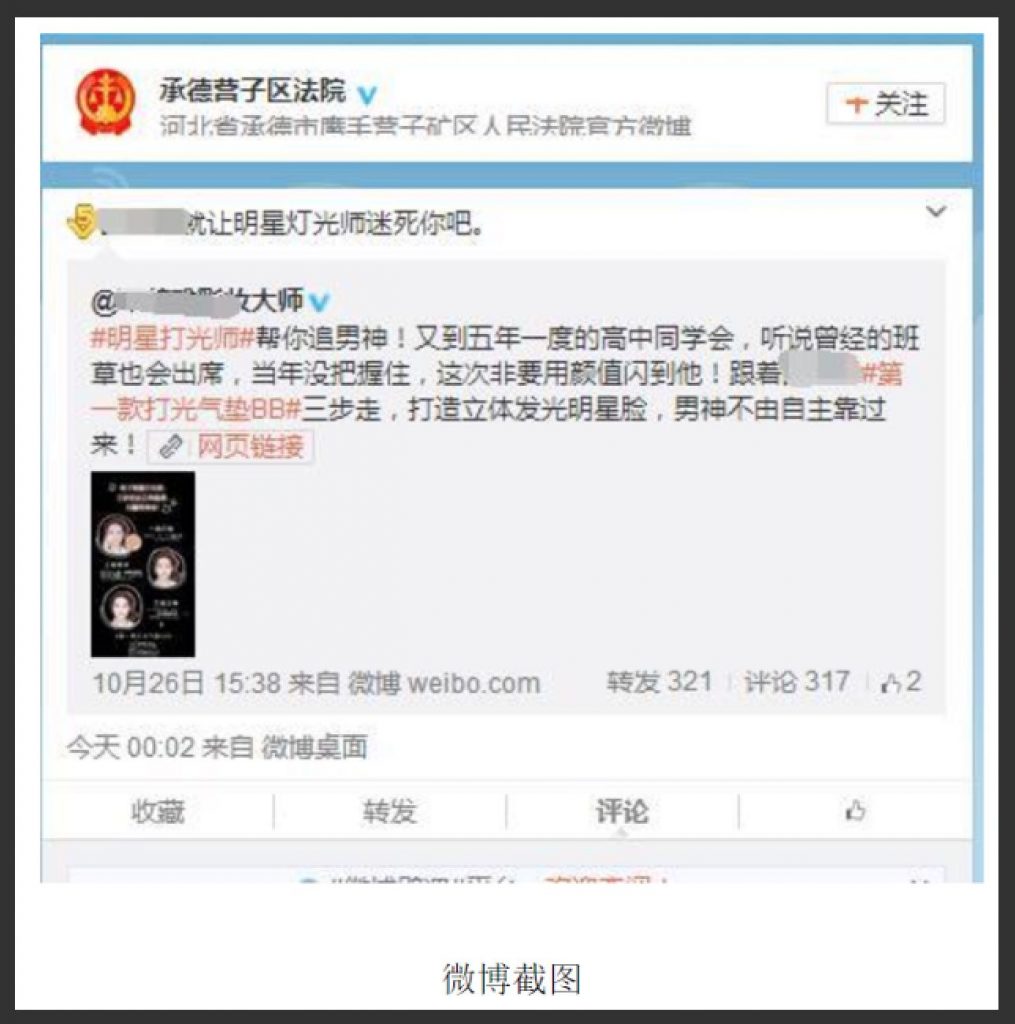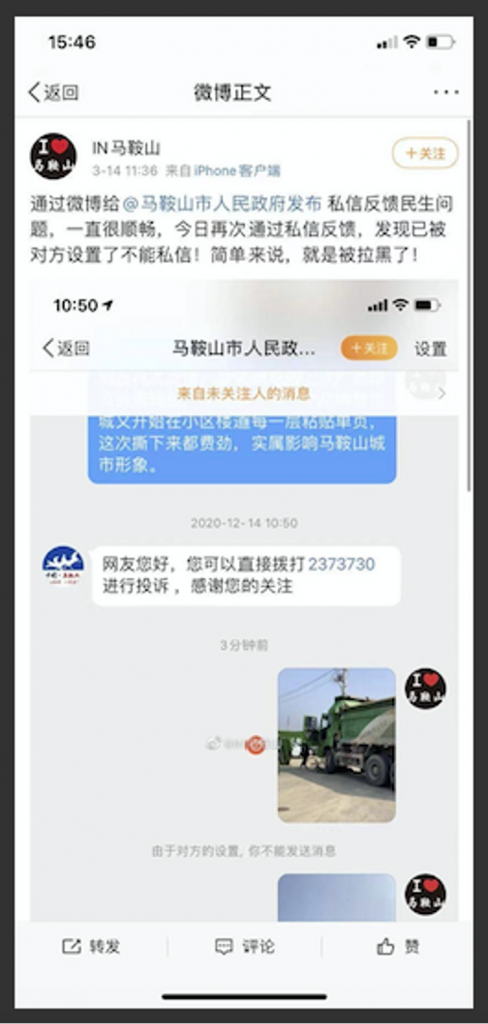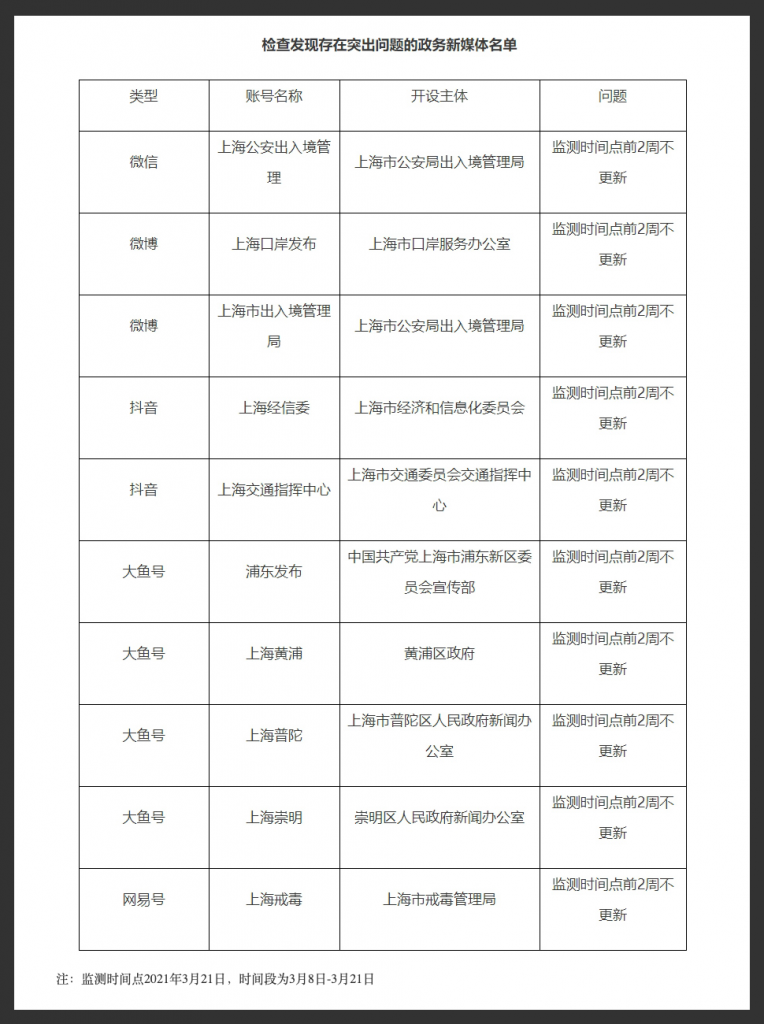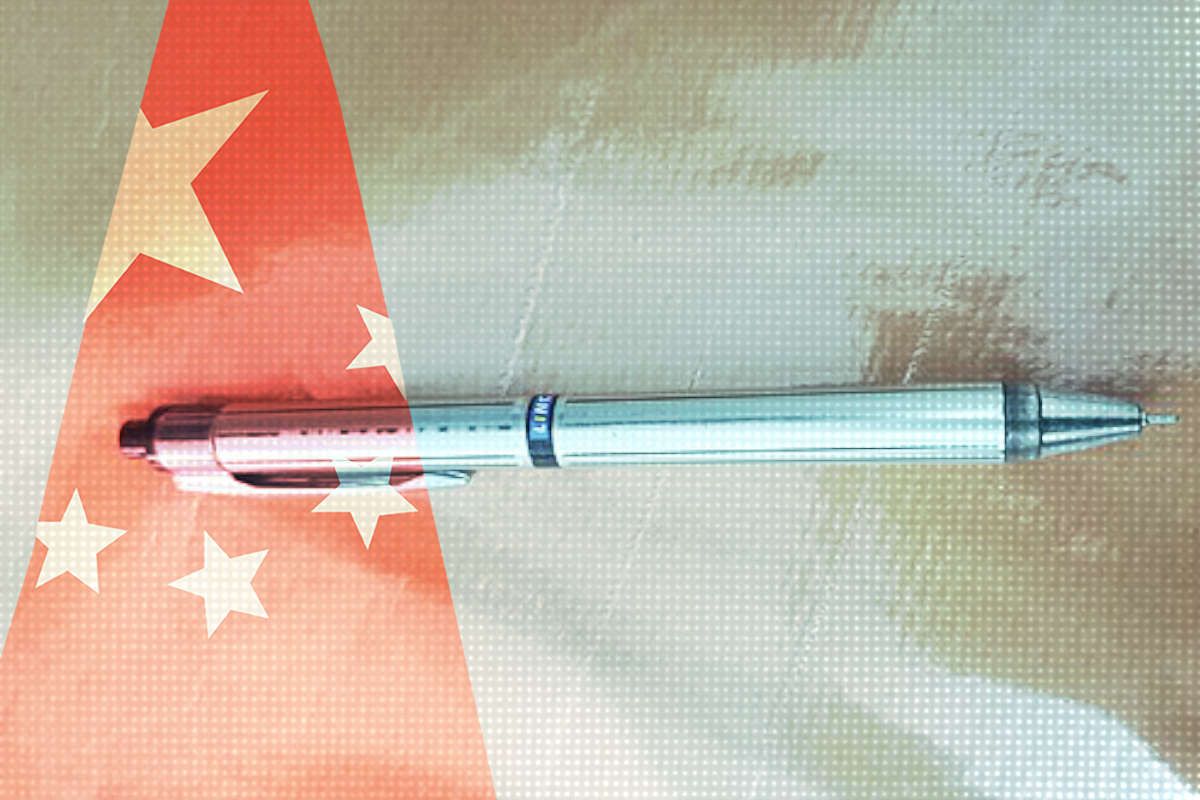Headlines and Hashtags
Sweeping Up the Government’s Social Media Mess

A woman sweeps the street in Shanghai. Image by Sung Ming Whang available at Flickr.com under CC license.
On May 1, as India faced a deadly second wave of Covid-19 infections amid a chronic shortage of hospital beds and oxygen, a Weibo post by China Chang’an Web (中国长安网) sought to grab readers by playing to a sense of national pride. The post showed two images side-by-side: on the left, China’s Tianhe space module burning off rocket fuel; on the right, the scene of a mass outdoor cremation of Covid-19 victims in India. “China lighting fires VS India lighting fires,” read the snide text of the post.
The juxtaposition quickly triggered a massive social media storm in China. While some defended the post, others saw it as morally reprehensible, displaying cruel disregard for the people of India. Beyond the debate over substance, the post prompted deeper questions about the role of China’s so-called “government affairs new media” (政务新媒体), those social media accounts operated by administrative organs and institutions at all levels in order to help disseminate the policies of the central leadership to the grassroots – and to transmit upwards the concerns of the public.
Why was the Weibo account of China Chang’an Web, a site operated by the Central Political and Legal Affairs Commission, a powerful body directly under the Central Committee of the Chinese Communist Party (CCP), creating sensational clickbait that served only to sow hatred and division? Surely the post, coming just one day after Xi Jinping had sent his official condolences to Indian Prime Minister Narendra Modi, was undermining diplomacy by playing to the worst impulses of online nationalists.

In fact, the China Chang’an Web post, which was subsequently deleted, was an embarrassment underscoring a far more widespread problem: rampant negligence and mismanagement among the very government affairs new media that were promoted 12 years ago in China as a breakthrough in communication between the government and the public.
Four Ailments
In April, China’s State Council issued new orders to overhaul social media accounts belonging to government branches and offices in an effort to tackle persistent mismanagement and neglect. Reporting on the issue shortly after the State Council release, the official Xinhua Daily Telegraph noted accounts that had been “opened but not properly operated,” deviating from their government affairs role. Other accounts were simply dormant, without regular updates. Still others had grown unruly, morphing into “marketing accounts,” or yingxiaohao (营销号), pushing content with the sole, and cynical, purpose of drawing traffic.
The statement demanded a course correction from government-run social media accounts, predominantly on the WeChat and Weibo platforms, as authorities sought to crack down on four outstanding issues:
- Dormant accounts without updates within two weeks
- Indiscriminate sensationalist content and an excessive tendency toward entertainment content
- Sharing of content irrelevant to government affairs
- Delayed deactivation of neglected accounts
Of these four issues, the government cited dormant, or “zombie,” accounts as the chief complaint. Such neglect was sometimes the result of government organs abandoning accounts after launching them in the midst of nationwide campaigns that advocated greater use of new media platforms without sufficient guidance or resources. A State Council opinion released in October 2013, for example, pushed for “strengthening openness of government affairs information to respond to social concerns,” and said that “all regions and departments should actively explore the use of government microblogs, WeChat and other new media for the timely release of authoritative government information.”
In many cases, accounts were not updated with any meaningful information for long stretches of time. The blindness on the part of government departments could sometimes lead to account breaches. In one of the most notorious cases, it was discovered in 2015 that the official Weibo account of a local court in Hubei had been hijacked to repost ads for beauty products, mobile phones and electronics. This happened for nearly 10 months before it came to the attention of court staff. This egregious blunder drew national attention – providing comic relief for the masses, if not substantive government affairs content.

Upon closer inspection, these lapses in professionalism could be linked to the quantitative standards applied by the central authorities to gauge the online influence of government social media. Owing to the disproportionate weight given to the amount of accumulated followers and likes, content quality naturally falls by the wayside as account operators race for novelty and online popularity. Government officials at lower levels are often under immense pressure to rapidly expand their social media presence, leading them to churn out eyeball-grabbing clickbait to compete against other government accounts.
Flourishing Problems
The first official government affairs Weibo account, “@TaoyuanWang” (@桃源网), was launched in China on November 2, 2009, followed less than three weeks later by “@WeiboYunnan” (@微博云南), operated by Yunnan’s provincial propaganda department. In the more than 10 years since, government affairs new media accounts have developed rapidly – or “furiously,” to borrow the wording used by People’s Daily Online in its own review of the phenomenon. And the secret behind this furious development also explains why such glaring problems have emerged.
Beginning in 2009, the Chinese government actively encouraged government branches to establish a social media presence and to take advantage of advancements in digital technology. The use of new media mushroomed across various platforms from 2013 through 2015, as every branch sought to engage new generations of Chinese plugged in to the mobile internet.
But in rather stark contrast to the strong centralized controls enforced on much of Chinese media and the internet, particularly during an era in which Xi Jinping has demanded media loyalty and sought to remake controls over cyberspace, official social media accounts have seemed to operate without stringent management or intervention. Central supervision of the government’s own social media accounts has been weak in practice, and this means they have often flourished in the wrong ways.
Rather than giving their own affiliates and departments a public dressing-down, the central government has historically adopted a low-key approach in the form of “opinion” statements and “notification” papers. In December 2018, the State Council issued its “Opinion on the Healthy and Orderly Development of Government Affairs New Media” (国务院办公厅关于推进政务新媒体健康有序发展的意见), which laid out both problems and action points. The opinion clearly spelled out both the government’s hopes for official new media as a resource for boosting credibility and enhancing control of public opinion (“channelling”), and its concerns about how these accounts were having in many cases precisely the opposite effect:
Government affairs new media are important channels for the Party and the government to connect with the masses, serve the masses and unite the masses in the mobile internet era. [They are] an important means to accelerate the transformation of government functions and build a service-oriented government, and an important front on which to channel online public opinion and build a clear cyberspace environment . . . . But at the same time, some government affairs new media have outstanding problems such as a lack of clear function and positioning, lax release of information, unstandardized operation and maintenance, poor supervision and oversight, and so on, and such phenomena as “zombie” (僵尸) accounts, “sleeping” (睡眠) accounts, “shocking remarks” (雷人雷语), and “lack of interactivity and service” (不互动无服务) occur. These have an adverse effect on the image and credibility of the government.
This whip-crack for a supposed overhaul of government affairs new media even attracted attention from some international media, the Reuters news agency noting that China’s cabinet had “warned government departments to clean up their social media image amid a drive to bolster the government’s online presence to help reach tech-savvy young people who get their information from smartphones.” The State Council followed in April 2019 by releasing a set of measurement indicators to ensure “scientific management and standardised guidance” of government affairs new media from the central policy level.

When it comes to policy, the central government has clearly intensified its efforts to rein in unruly government black sheep on social media, and stave off damage to the government’s social media image.
In practice, however, these government pronouncements have often failed to trickle down into action. Coverage of the issue in state media suggests that pragmatic solutions have not followed. The abovementioned article in the Xinhua Daily Telegraph last month found a wide range of inadequacies among official social media accounts. It found that language about “zombie” and “shell” (空壳) accounts, those rarely updated or not posting content at all, figured prominently in several provincial-level surveys of government websites and social media accounts during the first quarter of 2021. A report from the Hubei provincial government, for example, noted that one government affairs new media account in Tongshan County had not released a single item of information since its launch years ago, and another government account in Fang County, west of the city of Xiangyang, was last updated in October 2019.
In many cases too, the report noted, government websites and social media accounts purporting to offer interactive services for citizens, such as complaints and recommendations, were not actually functioning, so that those writing were faced with a wall of silence. In one case back in March this year, a Weibo user from the city of Ma’anshan, in Anhui province, posted online about his frustrations in trying to reach out through the city’s official social media account, “Ma’anshan City People’s Government Announcements” (马鞍山市人民政府发布), to address an outstanding concern. The user noted that his attempt to send a personal message to the government account yielded a message that said: “Owing to settings from the other party, this information cannot be sent.”

The Xinhua Daily Telegraph reporter also found quite a number of official social media accounts that were engaged in questionable commercial activities, such as marketing products, or that were focused on celebrity and entertainment.
In a commentary for the China Youth Daily newspaper on May 12, as the impact of the snide post from China Chang’an Web still reverberated, Ma Liang (马亮), a professor of public administration at Renmin University of China, wrote that quality should trump quantity when it comes to assessing the online influence of official social media accounts. “The assessment and evaluation of government affairs new media should not be about a ‘one-size-fits-all’ measure of traffic,” Ma wrote. “Rather, it should focus on whether the relevant department is making good use of new media channels for information dissemination, the provision of services and interactive communication.”
On May 17, the Shanghai government released its own report looking at government affairs new media and websites operating under its jurisdiction. The report noted numerous problems, including misrepresentation of government policies and failure to update channels and ensure they remained active. The report even included a shame list of government affairs new media that had not been updated for at least two weeks at the time of investigation.

More or Less?
Ma proposed a number of necessary steps for systematic restructuring. Among them, he suggested that the government not resort to blanket mandates for the creation of official social media channels. “There should not be excessive requirements for comprehensive coverage of government affairs new media,” he said. “Nor should there be compulsory orders for Party and government organs to register accounts on all new media platforms.”
The development of government affairs new media has been conceived by the CCP as part of a larger process of remolding the traditional “mainstream” media – meaning the Party-state media system that works to enforce the Party’s dominance over public opinion. Following Xi Jinping’s mandate for the reorganization of official media at an August 2014 meeting of the Central Leading Group for Deepening Reform, at which he called for greater integration of new media and CCP-led traditional outlets, a report from Tsinghua University stressed the importance of government affairs new media. Official social media channels had the potential, according to the report, to act as channels offering greater interaction between the government and the general public. Government affairs new media might “provide ways for government departments to communicate with the public and improve the quality of services, and also provide interactive platforms for the general public to monitor the government and provide feedback.”
Despite the talk of quality, however, the Tsinghua University report was focused on numbers and rankings. It noted that by October 31, 2014, 16,446 government affairs accounts had been registered on the WeChat platform, and a staggering 116,607 government affairs accounts had been registered on Weibo. The report’s measure of “comprehensive communication power” (综合传播力), including a Top 20 list, was essentially about traffic.
The government continues to hope that official new media channels might lead to greater interactivity and responsiveness, that they might enhance the Party’s relationship to the masses by offering clarity on policies and procedures, and by streamlining of administrative services. An April commentary at People’s Daily Online stressed that “government affairs new media are an important means to accelerate the transformation of government functions and build a service-oriented government.” Beyond that, these channels might bolster the CCP’s capacity to lead public opinion – regarded as so essential to maintaining stability.
But for the time being, clearly, government affairs new media have also become a headache, another problem to be addressed from on high. When it comes to the national rollout of official social media channels, particularly given embarrassments like the recent storm over the China Chang’an Web post, could the leadership be realizing that less is more?





















